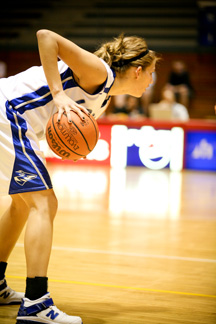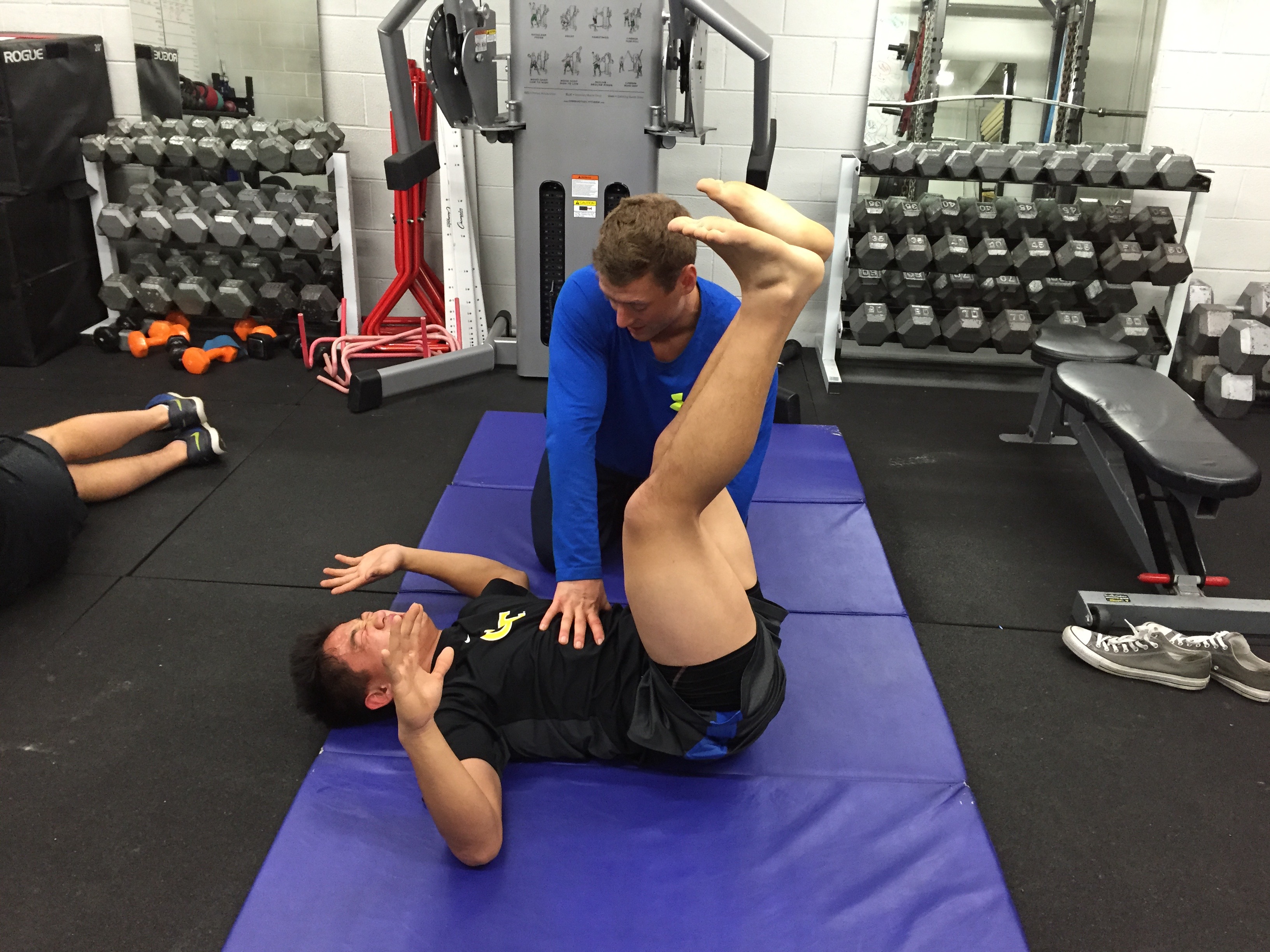How to be an explosive basketball player
Only 15% of the game of basketball is spent cutting, sprinting, and jumping, which would be considered as high intensity exercise. So how do you train specifically for basketball? If you consider the fact that the majority of the game of basketball consists of low to moderate work, you would think that's how you would train. But, it is those quick actions, the first steps, the change of directions, the quick jump for a rebound, which make the difference between a good basketball player and a great basketball player.
 Basketball is composed of anaerobic and aerobic exercise. Anaerobic exercise is the high intensity movements (the ones we just mentioned) and aerobic exercise consists of the low to moderate intensity exercise. Jogging up and down the court, walking, and playing off-the-ball defense when your opponent is fairly stationary are all examples of aerobic activity. Like I suggested before, an athlete’s anaerobic capability, specifically their anaerobic power, has been shown to be the best predictor of performance. If we can increase an athlete’s anaerobic power, then we can hopefully increase their basketball performance. This concept should be the backbone of any good basketball strength and conditioning program. There is a place for something we call "metabolic conditioning", but that will be left for another post.
Basketball is composed of anaerobic and aerobic exercise. Anaerobic exercise is the high intensity movements (the ones we just mentioned) and aerobic exercise consists of the low to moderate intensity exercise. Jogging up and down the court, walking, and playing off-the-ball defense when your opponent is fairly stationary are all examples of aerobic activity. Like I suggested before, an athlete’s anaerobic capability, specifically their anaerobic power, has been shown to be the best predictor of performance. If we can increase an athlete’s anaerobic power, then we can hopefully increase their basketball performance. This concept should be the backbone of any good basketball strength and conditioning program. There is a place for something we call "metabolic conditioning", but that will be left for another post.
So how do you incorporate this? As a basketball player, you should be using drills that don't last very long and require explosive actions. When looking at basketball research in the Journal of Strength & Conditioning, I found one study suggesting that 97% of all high intensity exercise lasts less then 15 seconds. That means that you should not be doing drills for longer than 15 or so seconds. Practice, scrimmages, and pick-up games are a perfect way to get in low-moderate intensity work. Where you focus on power production is during your own S & C workouts.
How do you train for power? Jump! A properly designed plyometric program will transform your basketball game. Most people only think of vertical jumps when they think of jumping, but in reality, there are TONS of ways to jump. Single leg jumps, hurdle jumps, broad jumps, split jumps, skipping, box jumps, lateral jumps... the list goes on and on. The most important thing to remember is that you need to recover between jumps. When I played basketball in college, I thought more was always better. So when I did squat jumps, I would do as many as I could until I couldn't move. By the end, I would be lucky to jump over a phone book. Now, after extensively studying plyometric training, I can tell you this is the worst possible way to train. Do you want to train your body to consistently jump 6 inches... or 30 inches? With plyometric training, you want maximal effort for a few reps so you train when you aren't fatigued.
The same is true with agility drills. I have seen many many coaches run their players into the ground and then wonder why their performance stinks. It's because no recovery means poor performance. For most of you, you are inevitably going to have a few lousy coaches in your career. That's why it is even more important for you to train properly in your S & C workouts. Your agility drills should be short, high intensity. If you do ladder work, do it as fast as you can and rest before doing it again. Same thing with sprints, shuffles, change of direction drills... everything should be all out effort with recovery after. Rest does not equal an easy workout. I can guarentee you will still be tired and sweating after your workout.
I have played years and years of basketball, survived some of the most brutal practices and workouts, and now have studied the sport extensively. After all the years, I still see the same mistakes made over and over. Here's the simplified list:
- No lateral movement work. What do basketball players do in their off-season? Run. And usually long distances, sometimes with sprint work. What about moving from side to side?
- No rest or recovery. As I said before, if you wonder why your vertical doesn't increase, take a look at your training program and see if you have recovery after sets or even full recovery days.
- Fear of the weight room. You will see HUGE gains in your performance if you actually lift hard. Specifically, leg lifts (and even better, single leg lfits). And for a bonus, you may decrease your chance of a knee injury.
- Recovery... as in EATING. A workout with out proper nutrition following is wasted. You don't feed the machine, how will the machine perform the next day?
Email me if you have any questions (

